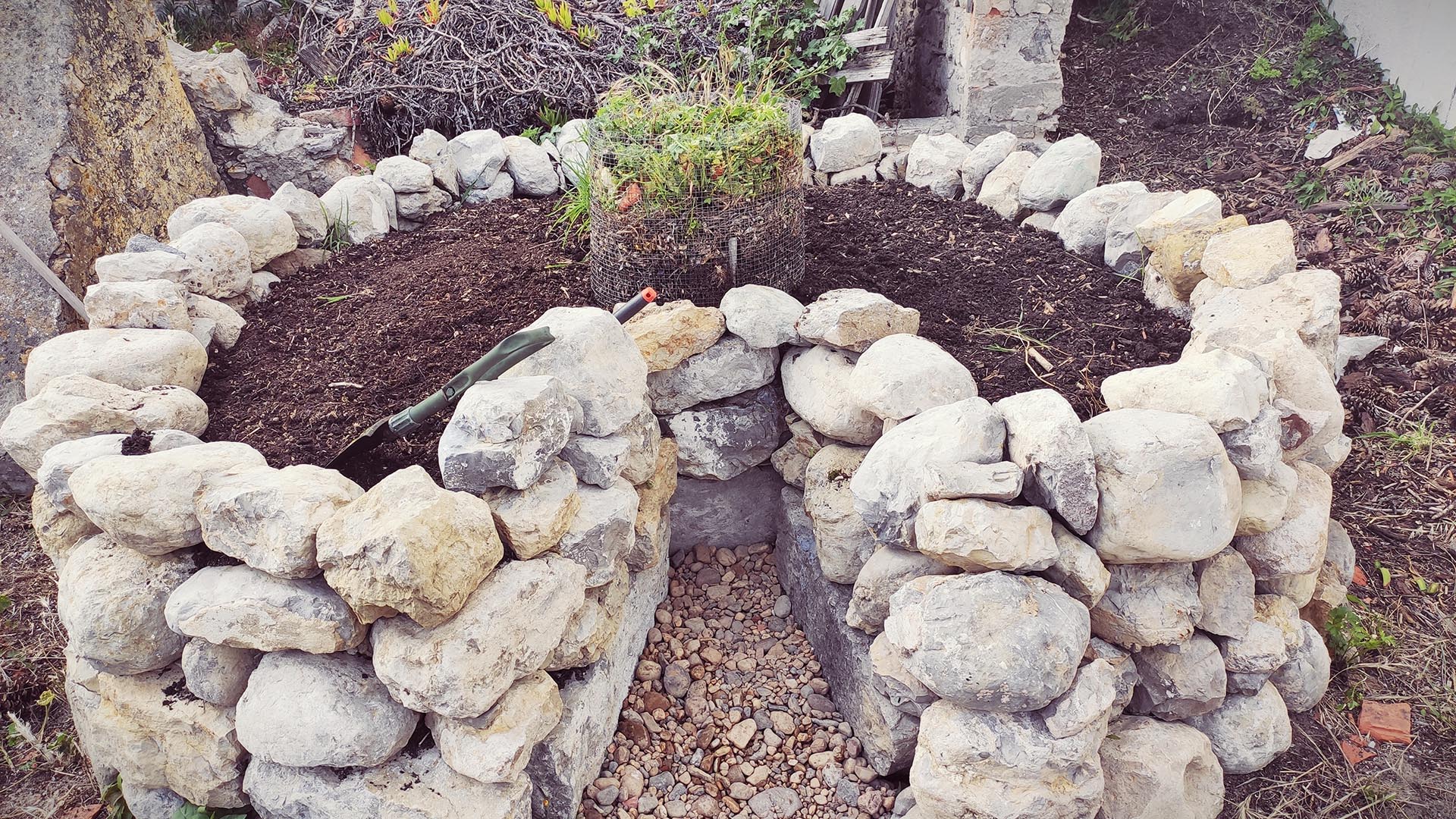







Miles Flansburg wrote:Howdy Markus, Depending on what type of tomato that you are planting, I always consider that they will grow upwards more than horizontally. I plant them about two feet apart and build a cage around them for verticle support.











Eric Hanson wrote:Welcome to Permies Markus.
A keyhole garden is a great way to start, but your sandy soil makes it a challenge. Many people who grow keyhole gardens do so by making it a raised bed garden, sometimes raised up about 2 feet (about 60 cm). Is there any chance you could build a wooden frame for the bed? You do mention that you have some 100 year old boards laying about. Perhaps those could be used to create the raised edges. Once the edges are built, you can fill with a combination of sand (preferably darker sand--you may have to dig a little to find if) and organic matter. If you can find any clay, mix that in as well.
But regarding the branches and wood you have lying about. I see no reason you could not incorporate the wood into the soil itself if you wanted to so long as it has not been treated with any chemicals (and you seem pretty certain it has not). Any branches from the trees can also be used. Personally, I like to break the wood down to smaller pieces, but this is not strictly necessary.
If you were so inclined, you could fill the beds with wood chips and break them down with mushrooms (I like to use Wine Cap mushrooms). I personally like to trim my bushes and collect the branches. When I have enough I rent a wood chipper and turn the branches into chips which go in the raised garden beds and get inoculated with mushroom spawn. This will take some time, but the resulting compost is amazing. My mushroom compost is far more fertile than any soil I have ever had. If you do try this, given your heat and aridity, I would think that winter would be the best time. But I don't really know your specific climate all that well, and I am thinking that you would want to sow mushrooms when you have the longest period of soil moisture. If you are still interested in this option, I can point you to some threads on Permies that detail how to make mushroom beds.
But if you want to try using your own soil, then by all means do so. I would advise mixing layers of sand/soil and woody branches, green foliage and those boards if you are really interested.
One final note about those boards though. If they lasted 100 years more or less intact, something is preventing rot and decay. Do you know what species they are made from? Hopefully they will rot in contact with soil and soil microbes, but I would want to be sure of this before I buried them as I would not want to have a rot resistant board buried in my garden soil. But ultimately, this is your call.
Markus, I know I have dumped a lot on your plate, but I am trying to help with some ideas, not so much with specific instructions. I hope this is helpful, but if you have any questions, please feel free to ask and also, please keep us updated. This is an exciting project.
Eric

William Bronson wrote: Hello Markus, and welcome to Permies !
That is beautiful place you have there, with lots of potential.